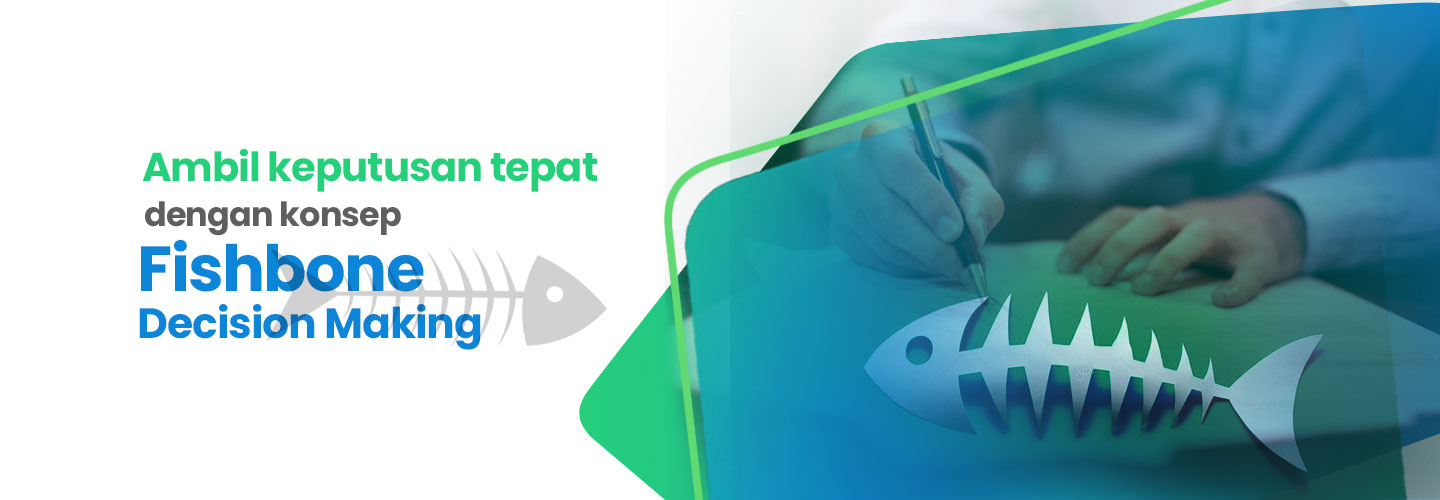Fishbone Diagram for Decision Making Process

Problems are a natural thing and definitely happen in the company. Given this, of course it becomes very important for companies to equip their employees with various skills in solving problems.
When the company is in an effort to solve a problem or challenge, the company will be required to be able to make decisions. Important decisions in the company must be accompanied by the right strategy. This is important so that its implementation can achieve common goals and avoid risks that may arise in the future.
There are various ways that companies can do when they are carrying out the decision-making process, especially when facing a problem. One way is to use a fishbone diagram.
Fishbone diagrams have a function in managerial systems which are generally used as a tool to identify the main cause or root of the problem. The use of this diagram can be supported by a brainstorming session conducted by the team to analyze various factors that cause the presence of a problem.
Therefore, this diagram is often referred to as a "Cause and Effect diagram. In addition, it turns out that there are various other terms used to refer to this diagram, including: Ishikawa diagram, Herringbone diagram, or Fishikawa diagram.
This diagram was first designed in the 1960s by Prof. Kaoru Ishikawa, an expert in quality management. The name of this diagram is taken because the shape of the resulting diagram resembles the shape of a fishbone.
The main purpose when this diagram was first developed was to serve as a quality assurance tool in the company (quality control). Along with its development, this diagram can then also be used for the following:
- Find the root of the problem
- Help solve problems in bottleneck conditions
- Support the evaluation process by identifying the exact location and reasons why a process is experiencing problems
Now, you may be wondering, "Why is this diagram a suitable option to support the decision-making process in the company?". When you and your company are dealing with a serious issue, sometimes you are required to recognize all the possibilities behind it first before taking a decision.
After the decision is made, you certainly want to minimize the risk factors for similar problems to come in the future. In addition, using a fishbone diagram will help you combine the brainstorming process that is supported by an illustration or mind map.
By accommodating this method, it can help you to explore every factor related to the problem at hand. The use of fishbone diagrams can be done by applying the following steps.
1. Identify problems
The first thing you can do is make a list of the main problems that are the cause of the obstacles or challenges that the company is facing. You can also write down supporting facts such as where the problem arose, who the parties were involved in, the obstacles actually faced, or when the problem arose.
Write the problem that was found in a box on the left side of the paper. From the box draw a straight line horizontally. This line will look like the spine of a fish which you can then fill in with various ideas.
2. Focus on the potential factors involved
The second step you take is to identify any factors that may be part of the problem. These factors can be in the form of systems, tools, materials, the involvement of external factors, the parties involved, and so on.
Each factor name that is found, can be written on the branch of the line that you created earlier. You can also write down as many factors as you can find. Don't forget to also listen to input from your co-workers while this process is being carried out.
3. Identify various causes behind factors
After you have written down a number of factors related to the problem at hand, start to find out what are the possible causes behind the emergence of these factors.
You can write down these causes by creating a new branch on each factor you have listed and using short terms that are easy to understand. If you think this cause is still too complex, then create another branch so that it can help you unravel it.
4. Analyze the diagram
When you are at this stage, of course, you can see a map in the form of a fishbone that contains a series of problems and their causes. The next step is to find out what factors have the most influence in this condition. This will lead you to efforts to conduct investigations, conduct surveys, and so on.
The goal is to get validation for the findings you get and provide an opportunity to look at the problem as a whole. In addition, you can also get another perspective on the problem at hand.
Conducting fishbone decision making provides insight to company executives to determine decisions in the form of the right solution for the company. You can also train company managers to make decisions based on the right rationality by participating in the Problem Solving & Decision Making program.